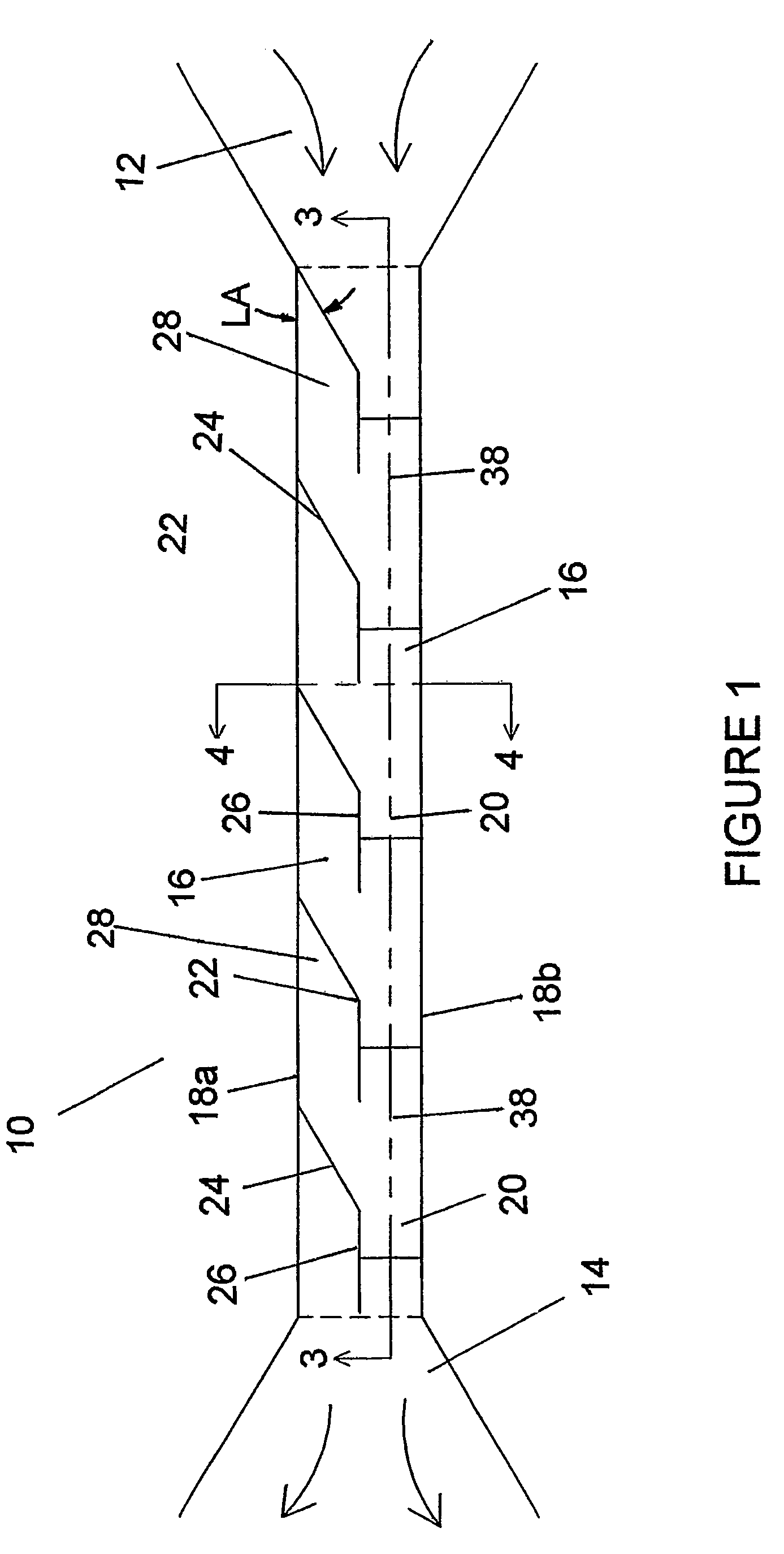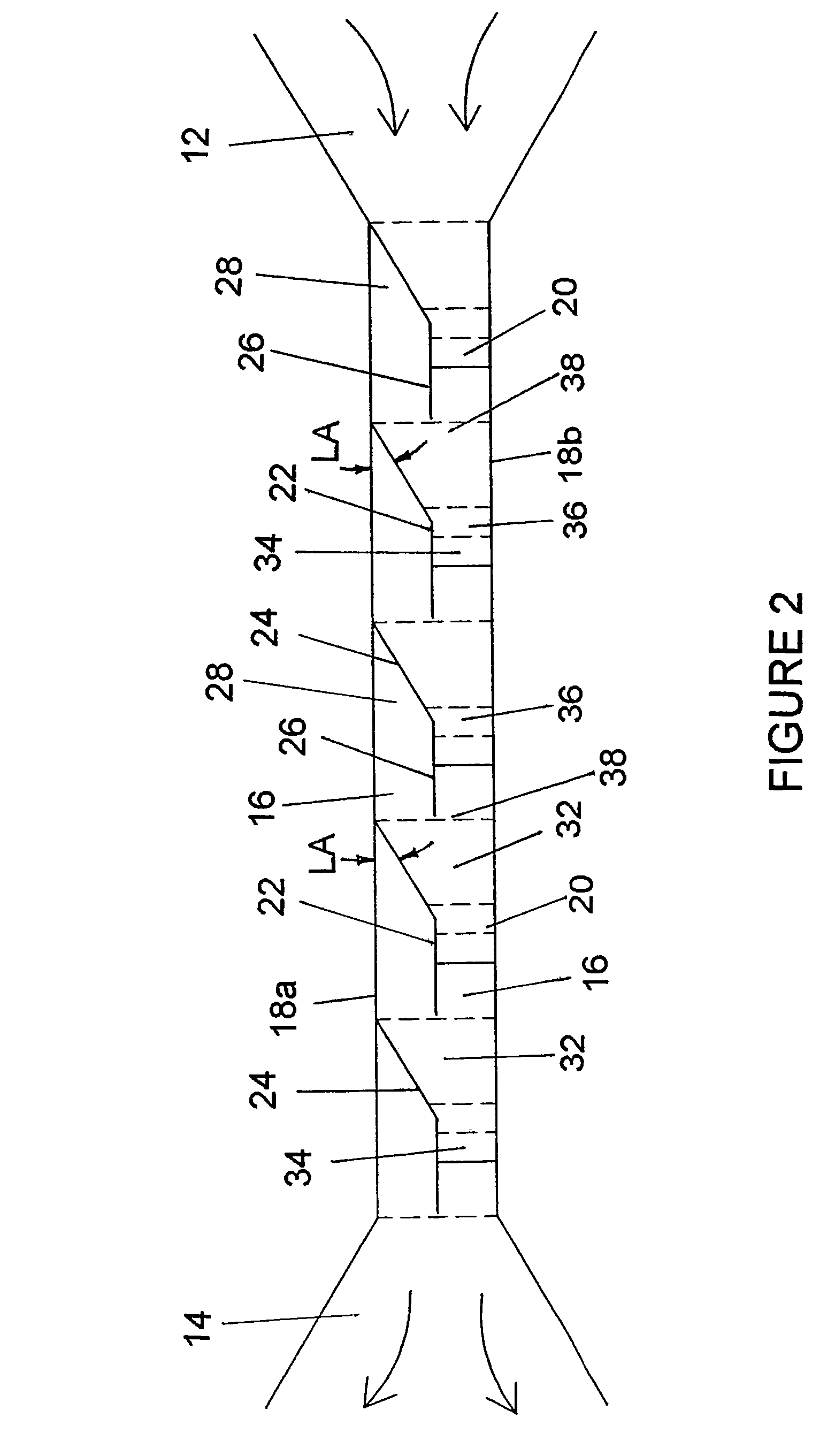High-flow sediment-free fish ladder
a high-flow, sediment-free technology, applied in pisciculture, aquaria, marine site engineering, etc., can solve the problems of increasing the cost of maintenance, reducing the attractiveness of fish, and reducing the efficiency of fish farming, so as to achieve the desired simplicity of structure and manufacture. , the effect of avoiding or minimizing the problems encountered
- Summary
- Abstract
- Description
- Claims
- Application Information
AI Technical Summary
Benefits of technology
Problems solved by technology
Method used
Image
Examples
Embodiment Construction
[0023]Referring now in greater detail to the drawings, wherein the showings are for the purpose of illustrating preferred embodiments of the invention only, and not for the purpose of limiting the invention, FIG. 1 illustrates a fish ladder 10 extending between a flow inlet 12 and a flow outlet 14. The fish ladder has a bottom wall 16 from which a pair of spaced-apart sidewalls 18a and 18b upwardly extend. A series of projections or stair-steps 20 extend from bottom wall 16, and are longitudinally spaced apart along ladder 10. A series of baffles 22 also project from bottom wall 16, and are likewise longitudinally spaced apart along ladder 10. Each baffle 22 is generally speaking, laterally adjacent a stair-step 20, and has a diverter portion 24 and a divider portion 26. Diverter portion 24 extends from sidewall 18a in the downstream direction at an angle toward sidewall 18b, terminating or merging in the preferred arrangement at divider portion 26. The divider portion extends gener...
PUM
 Login to View More
Login to View More Abstract
Description
Claims
Application Information
 Login to View More
Login to View More - R&D
- Intellectual Property
- Life Sciences
- Materials
- Tech Scout
- Unparalleled Data Quality
- Higher Quality Content
- 60% Fewer Hallucinations
Browse by: Latest US Patents, China's latest patents, Technical Efficacy Thesaurus, Application Domain, Technology Topic, Popular Technical Reports.
© 2025 PatSnap. All rights reserved.Legal|Privacy policy|Modern Slavery Act Transparency Statement|Sitemap|About US| Contact US: help@patsnap.com



